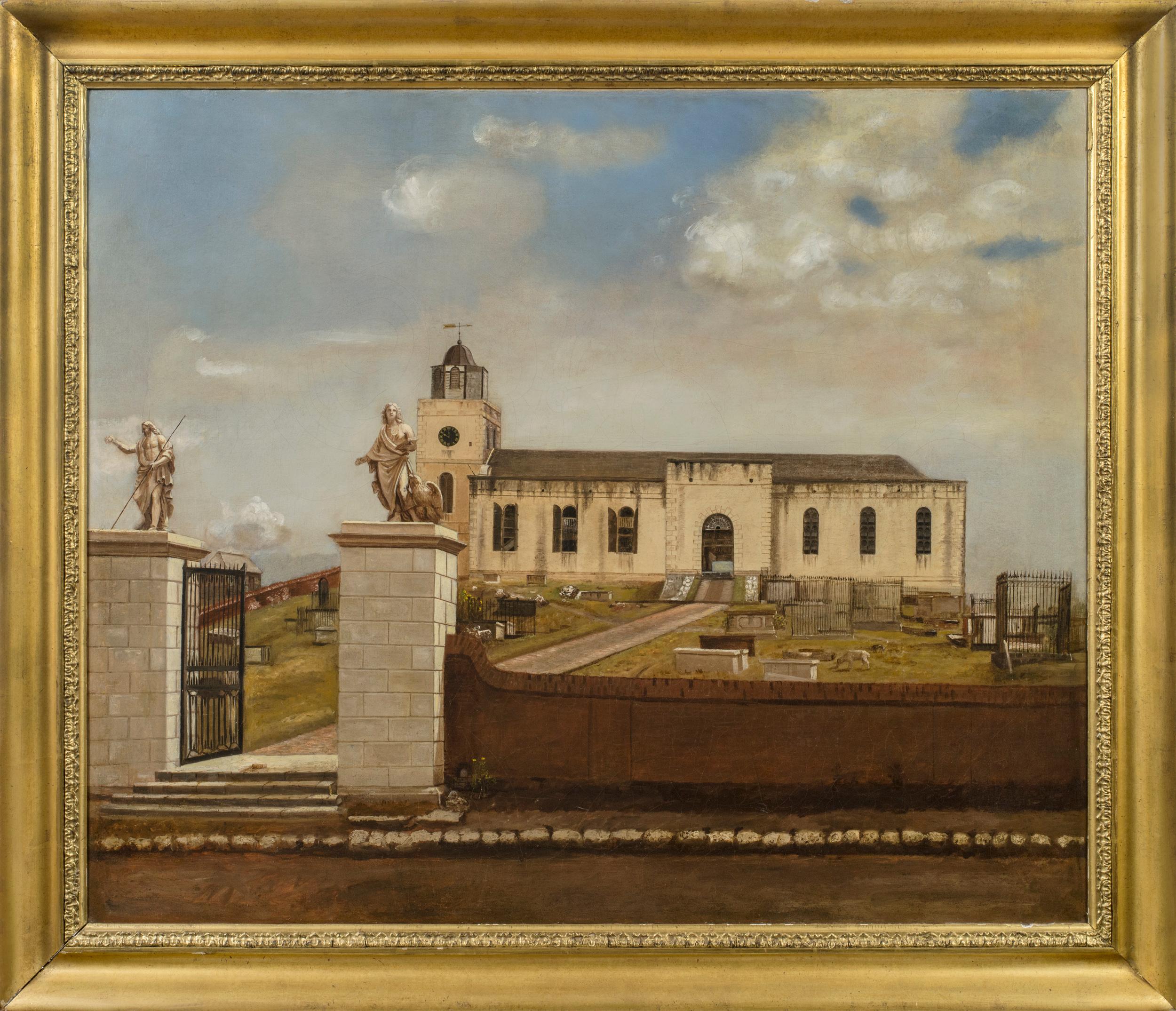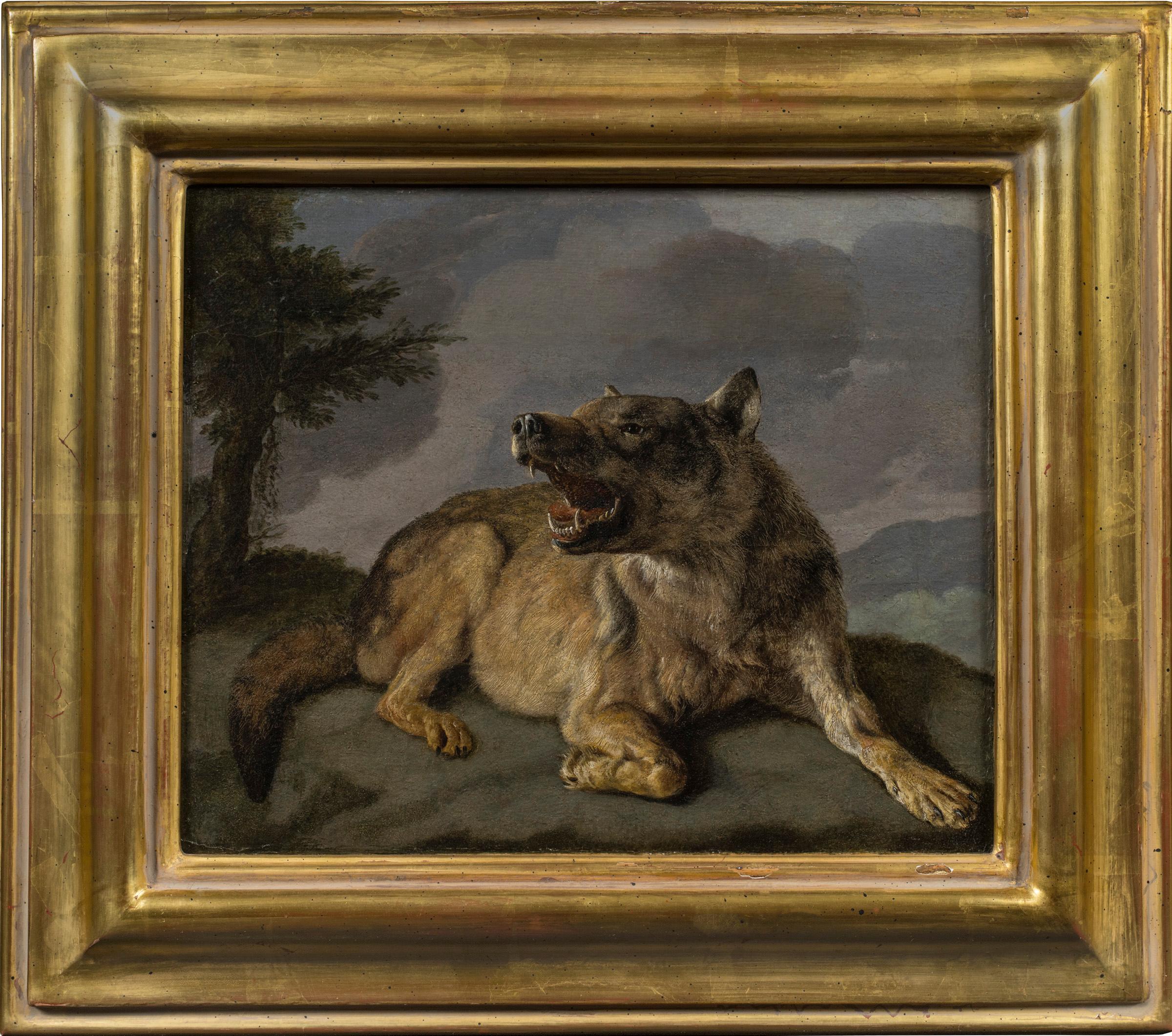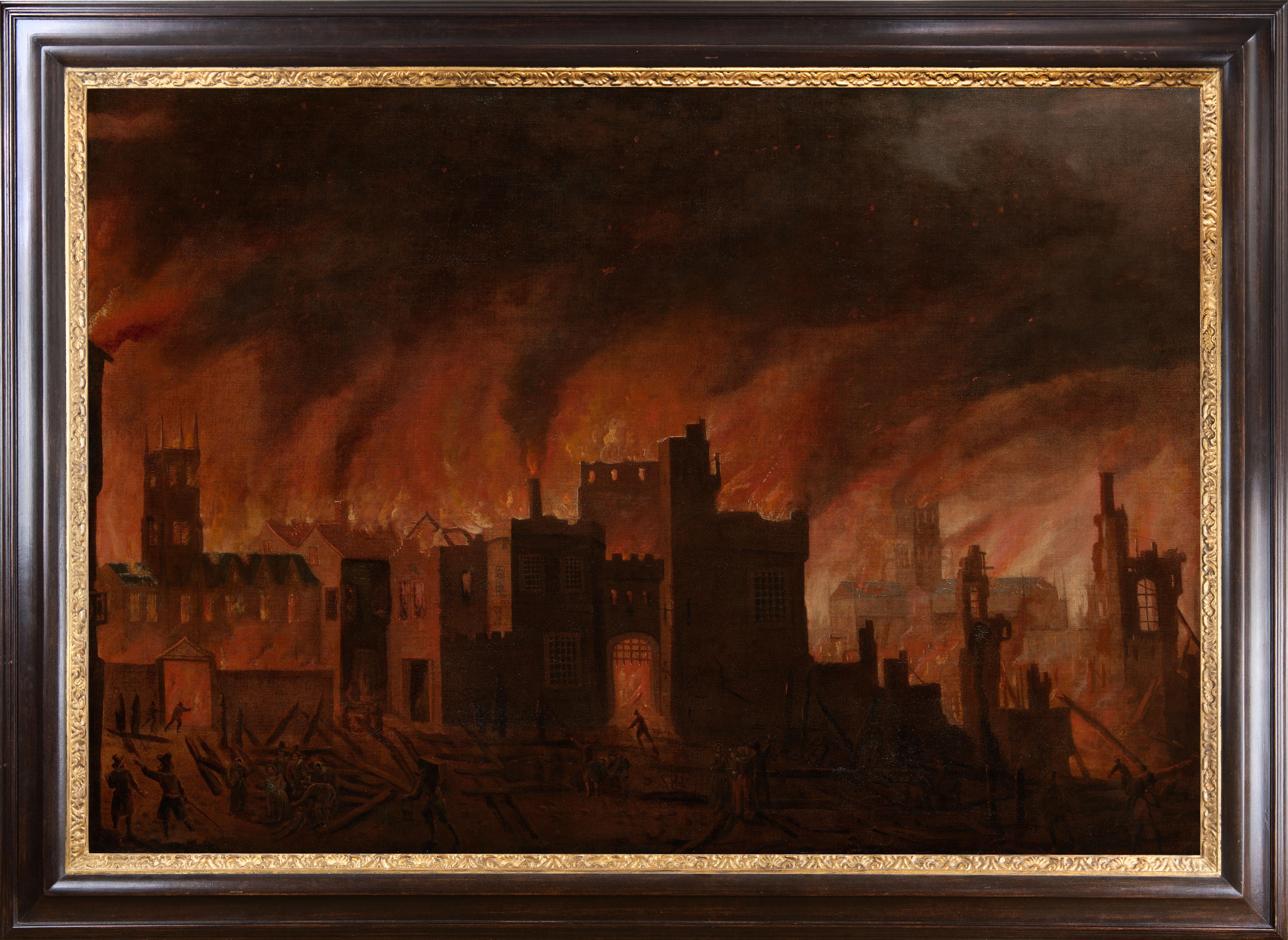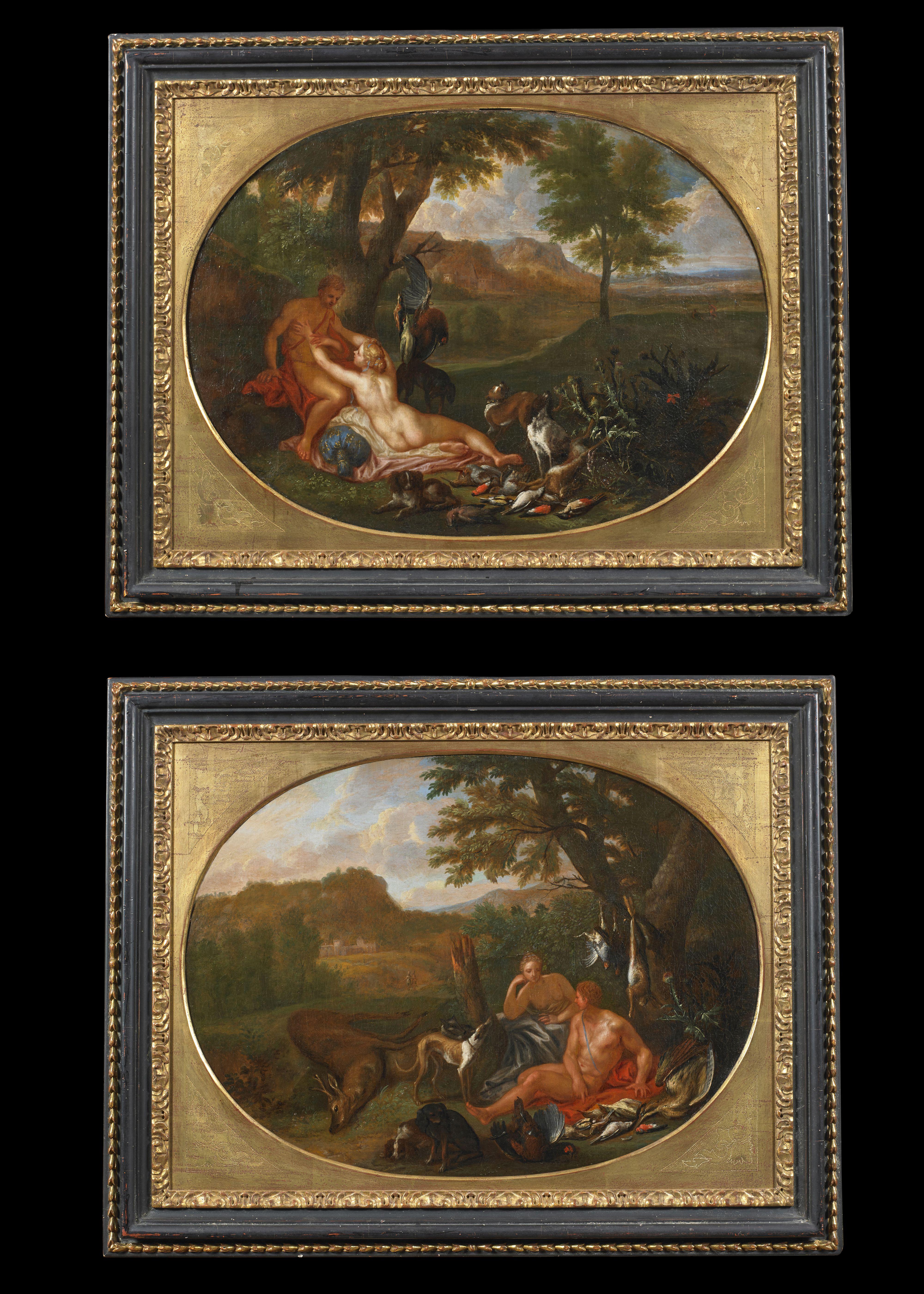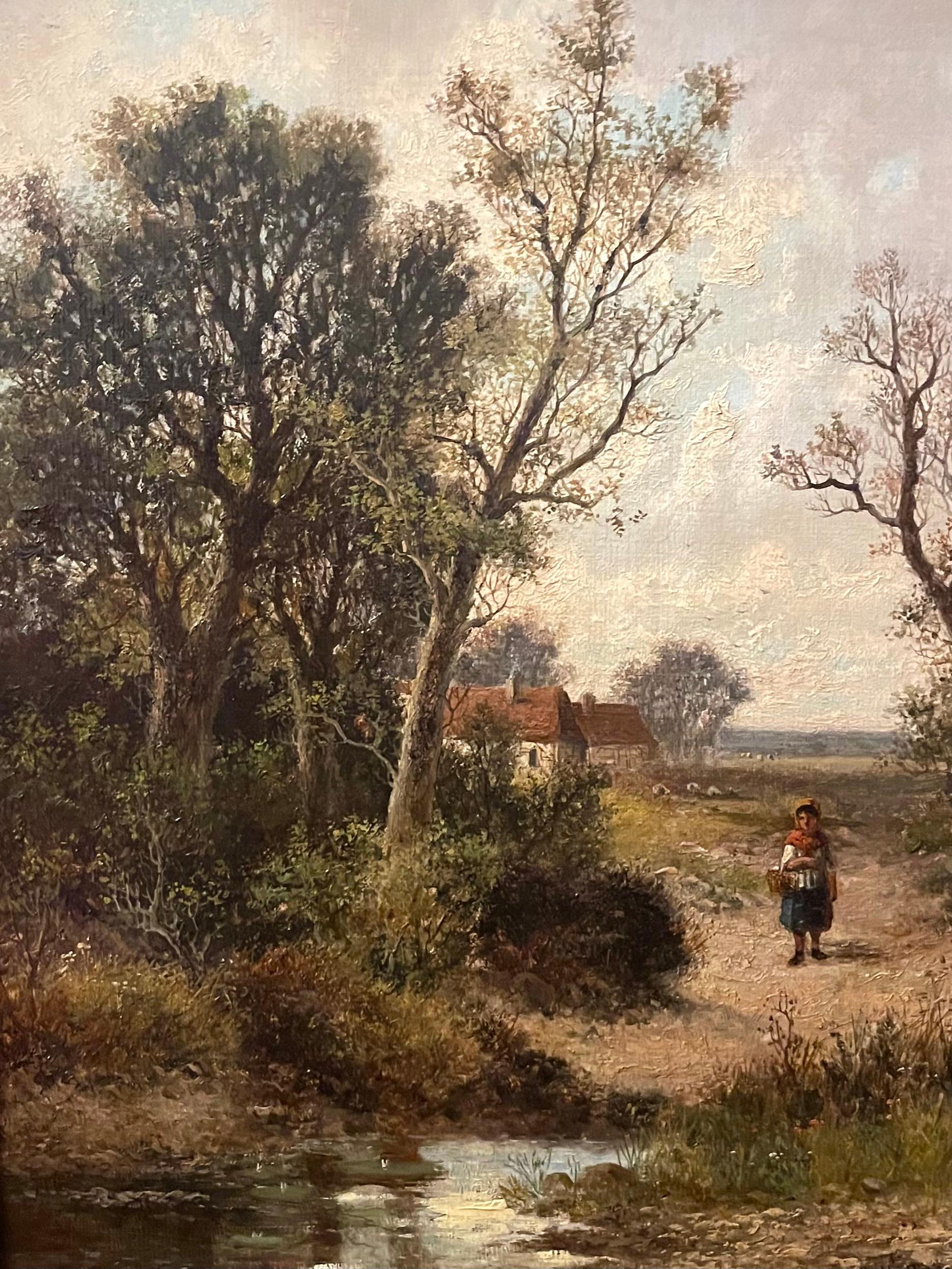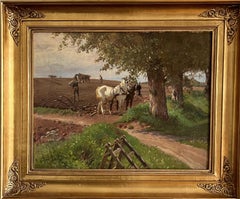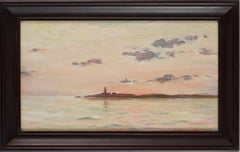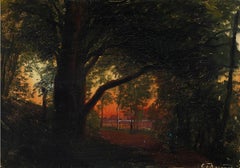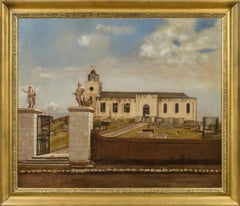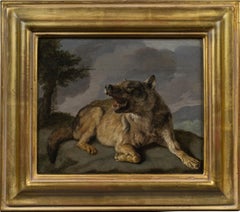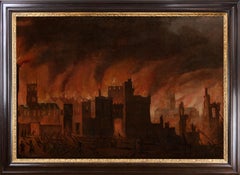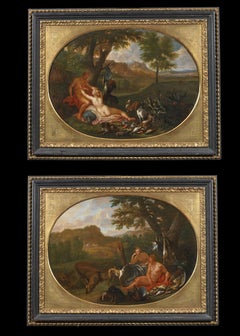Items Similar to Capriccio View with Classical Ruins and Santa Maria della Salute
Want more images or videos?
Request additional images or videos from the seller
1 of 13
Gaetano Vetturali (Lucca, 1701-1783) Capriccio View with Classical Ruins and Santa Maria della Salute1777
1777
About the Item
A Venetian capriccio view with classical architectural ruins and in the background the church of San Giorgio Maggiore and the Church of Santa Maria della Salute next to the Grand Canal by Gaetano Vetturali (Italy 1701‑1783). Indistinctly signed and dated G[...] 1777 lower centre. Oil on canvas, 71.5 x 57 cm, measurements without frame.
Vetturali specialized in imaginary landscapes (capricci) also called paesaggios or veduta (landscapes) with architecture and figures. He was born in Lucca and his initial training was in Bologna. He studied first under the painters Giovanni Domenico Brugieri and Giovanni Domenico Lombardi, the former, a pupil of Maratta and the latter of Marracci. Subsequently he moved on to study quadratura with Ferdinando Galli Bibiena in Bologna, and figure painting with Vittorio Bigari.
Quadratura genre is an illusory type of architectural painting that uses the perspective technique to create the illusion of a three-dimensional space on a plane or vaulted surface.
Vetturali was strongly influenced by Canaletto.
- Creator:Gaetano Vetturali (Lucca, 1701-1783) (1701 - 1783, Italian)
- Creation Year:1777
- Dimensions:Height: 28.15 in (71.5 cm)Width: 22.45 in (57 cm)Depth: 1.58 in (4 cm)
- Medium:
- Movement & Style:
- Period:1770-1779
- Condition:The surface has recently been cleaned. Three small older restorations to canvas visible from the back. See photo. Frame later.
- Gallery Location:Stockholm, SE
- Reference Number:1stDibs: LU2608214669962
About the Seller
5.0
Vetted Professional Seller
Every seller passes strict standards for authenticity and reliability
1stDibs seller since 2023
16 sales on 1stDibs
Typical response time: <1 hour
- ShippingRetrieving quote...Shipping from: Stockholm, Sweden
- Return Policy
Authenticity Guarantee
In the unlikely event there’s an issue with an item’s authenticity, contact us within 1 year for a full refund. DetailsMoney-Back Guarantee
If your item is not as described, is damaged in transit, or does not arrive, contact us within 7 days for a full refund. Details24-Hour Cancellation
You have a 24-hour grace period in which to reconsider your purchase, with no questions asked.Vetted Professional Sellers
Our world-class sellers must adhere to strict standards for service and quality, maintaining the integrity of our listings.Price-Match Guarantee
If you find that a seller listed the same item for a lower price elsewhere, we’ll match it.Trusted Global Delivery
Our best-in-class carrier network provides specialized shipping options worldwide, including custom delivery.More From This Seller
View AllLandscape with Horses and Farmers, Oil on Canvas, Painted 1898.
Located in Stockholm, SE
A fine landscape with horses resting by some trees and some farmers working the soil by Frants Peter Diderik Henningsen (1850 - 1908). Oil on canvas. Signed with monogram "FH" and dated 1898.
Henningsen was a Danish painter and draftsman.
In 1870, he was admitted to C. V. Nielsen's drawing school and then the Royal Academy of Fine Arts in Copenhagen, from which he received his graduation certificate in 1875. As early as 1874, he exhibited his first work, a portrait of actress Julie Sødring, and he was subsequently represented at almost all Spring Exhibitions. He exhibited at Charlottenborg between 1875-1905 and also did exhibitions in Stockholm, Berlin and Paris. He showed great skill in many different areas, e.g. portrait painting, animal painting, landscape painting, genre painting and illustrations. Immediately after the academy, he traveled with academy scholarships to Germany, later to France in 1877-1878, where he applied to Léon Bonnat's school in Paris, and from where in the spring of 1878 he made a trip to Spain together with P.S. Krøyer, Frans Schwartz...
Category
1890s Naturalistic Landscape Paintings
Materials
Canvas, Oil
Hållö Lighthouse, Smögen at Sunset.
Located in Stockholm, SE
Serene sunset over the waters near Smögen on Sweden's west coast, with the sun setting just behind the island of Hållö and its lighthouse by female artist Ingeborg Westfelt-Eggertz. ...
Category
1890s Impressionist Landscape Paintings
Materials
Canvas, Oil
Sunset over Dyrehaven. Oil on Canvas, 1860.
Located in Stockholm, SE
Carl Frederik Aagaard, Sunset over Dyrehaven. Signed C.F. Aagaard. Oil on canvas laid on card box panel. 22×32 cm without frame. A tergo written:...
Category
1860s Naturalistic Landscape Paintings
Materials
Canvas, Oil
The River Silverån in Hässleby, Sweden, Plein air
By Elias Erdtman
Located in Stockholm, SE
A fine small river landscape "Silverån" painted "en plein air" by Elias Erdtman, (1862-1945). Signed E. Erdtman and dated 1883. Oil on canvas mounted on board.
This is a rare work f...
Category
1880s Naturalistic Landscape Paintings
Materials
Canvas, Oil, Panel
Stockholm View From The Royal Park Djurgården
Located in Stockholm, SE
A view of Stockholm painted from the Royal Park of Djurgården and overlooking the small island of Kastellholmen painted by Alfred Bergström (1869-1930)
The church visible in the background is Katharina church, built in 1695, located in Södermalm, Stockholm.
Signed: Alfr. Bergström, 1887.
Oil on canvas.
A very early work by Bergström when he was only 18 years old. Painted en plein air, probably during the late autumn or early winter of 1887 when he did his first year of study at the Royal Art Academy.
Alfred Maurits Bergström was a Swedish artist and professor at the Royal Academy of Arts. He was a painter, watercolorist and etcher.
During the years 1887–1891 he studied at the Academy and won the Royal Medal...
Category
1880s Naturalistic Landscape Paintings
Materials
Canvas, Oil
$1,535 Sale Price
40% Off
Sunset Over Stockholm with Steamboat
Located in Stockholm, SE
A magnificent view of Stockholm, featuring a steamboat gliding slowly passing by Skeppsbron, (the bridge) with Södermalm and Katarina Church illuminated in the soft light of dusk. Th...
Category
1920s Art Nouveau Landscape Paintings
Materials
Canvas, Oil, Cardboard
You May Also Like
View of St. John’s Cathedral, Antigua
Located in New York, NY
Provenance:
Robert Hollberton, Antigua, ca. 1841
Private Collection, New York
The present painting depicts Old St. John’s Cathedral on the island of Antigua. The church was erected in the 1720s on the designs of the architect Robert Cullen. It measured 130 feet by 50 feet with north and south porches 23 x 20 ½ feet. The tower, 50 feet high with its cupola, was added in 1789. The church was elevated to the status of a cathedral, but disaster struck in the form of an earthquake that destroyed the building on 8 February 1843. A memorandum of that date relates the event:
“On Wednesday, 8th February, 1843, this island was visited by a most terrific and destructive earthquake. At twenty minutes before eleven o’clock in the forenoon, while the bell was ringing for prayers, and the venerable Robert Holberton was in the vestry-room, awaiting the arrival of persons to have their marriage solemnized, before the commencement of the morning service, the whole edifice, from one end to the other, was suddenly and violently agitated. Every one within the church, after the first shock, was compelled to escape for his life. The tower was rent from the top to the bottom; the north dial of the clock precipitated to the ground with a dreadful crash; the east parapet wall of the tower thrown upon the roof of the church; almost the whole of the north-west wall by the north gallery fell out in a mass; the north-east wall was protruded beyond the perpendicular; the altar-piece, the public monument erected to the memory of lord Lavington, and the private monuments, hearing the names of Kelsick, Warner, Otley, and Atkinson, fell down piecemeal inside; a large portion of the top of the east wall fell, and the whole of the south-east wall was precipitated into the churchyard, carrying along with it two of the cast-iron windows, while the other six remained projecting from the walls in which they had been originally inserted; a large pile of heavy cut stones and masses of brick fell down at the south and at the north doors; seven of the large frontpipes of the organ were thrown out by the violence of the shock, and many of the metal and wooden pipes within displaced; the massive basin of the font was tossed from the pedestal on which it rested, and pitched upon the pavement beneath uninjured. Thus, within the space of three minutes, this church was reduced to a pile of crumbling ruins; the walls that were left standing being rent in every part, the main roof only remaining sound, being supported by the hard wood pillars.”
The entrance from the southern side into the cathedral, which was erected in 1789, included two imposing statues, one of Saint John the Divine and the other of Saint John the Baptist in flowing robes. It is said that these statues were confiscated by the British Navy from the French ship HMS Temple in Martinique waters in 1756 during the Seven Years’ War and moved to the church. The statues are still in situ and can be seen today, much as they appeared in Bisbee’s painting, but with the new cathedral in the background (Fig. 1).
Little is known of the career of Ezra Bisbee. He was born in Sag Harbor, New York in 1808 and appears to have had a career as a political cartoonist and a printmaker. His handsome Portrait of President Andrew Jackson is dated 1833, and several political lithographs...
Category
19th Century Old Masters Landscape Paintings
Materials
Canvas, Oil
A Wolf
Located in New York, NY
Provenance:
The Marchesi Strozzi, Palazzo Strozzi, Florence
Sale, Christie’s, London, May 20, 1993, lot 315, as by Carl Borromaus Andreas Ruthart...
Category
17th Century Old Masters Animal Paintings
Materials
Canvas, Paper, Oil
Early oil depicting the Great Fire of London
Located in London, GB
The Great Fire of London in September 1666 was one of the greatest disasters in the city’s history. The City, with its wooden houses crowded together in narrow streets, was a natural fire risk, and predictions that London would burn down became a shocking reality. The fire began in a bakery in Pudding Lane, an area near the Thames teeming with warehouses and shops full of flammable materials, such as timber, oil, coal, pitch and turpentine. Inevitably the fire spread rapidly from this area into the City. Our painting depicts the impact of the fire on those who were caught in it and creates a very dramatic impression of what the fire was like. Closer inspection reveals a scene of chaos and panic with people running out of the gates. It shows Cripplegate in the north of the City, with St Giles without Cripplegate to its left, in flames (on the site of the present day Barbican). The painting probably represents the fire on the night of Tuesday 4 September, when four-fifths of the City was burning at once, including St Paul's Cathedral. Old St Paul’s can be seen to the right of the canvas, the medieval church with its thick stone walls, was considered a place of safety, but the building was covered in wooden scaffolding as it was in the midst of being restored by the then little known architect, Christopher Wren and caught fire. Our painting seems to depict a specific moment on the Tuesday night when the lead on St Paul’s caught fire and, as the diarist John Evelyn described: ‘the stones of Paul’s flew like grenades, the melting lead running down the streets in a stream and the very pavements glowing with the firey redness, so as no horse, nor man, was able to tread on them.’
Although the loss of life was minimal, some accounts record only sixteen perished, the magnitude of the property loss was shocking – some four hundred and thirty acres, about eighty per cent of the City proper was destroyed, including over thirteen thousand houses, eighty-nine churches, and fifty-two Guild Halls. Thousands were homeless and financially ruined. The Great Fire, and the subsequent fire of 1676, which destroyed over six hundred houses south of the Thames, changed the appearance of London forever. The one constructive outcome of the Great Fire was that the plague, which had devastated the population of London since 1665, diminished greatly, due to the mass death of the plague-carrying rats in the blaze.
The fire was widely reported in eyewitness accounts, newspapers, letters and diaries. Samuel Pepys recorded climbing the steeple of Barking Church from which he viewed the destroyed City: ‘the saddest sight of desolation that I ever saw.’ There was an official enquiry into the causes of the fire, petitions to the King and Lord Mayor to rebuild, new legislation and building Acts. Naturally, the fire became a dramatic and extremely popular subject for painters and engravers. A group of works relatively closely related to the present picture have been traditionally ascribed to Jan Griffier...
Category
17th Century Old Masters Landscape Paintings
Materials
Oil, Canvas
18th Century Galanti Scenes Van Limborch Rest Hunting Oil on Canvas Green Red
Located in Sanremo, IT
Pair of oval paintings measuring 66 x 89 cm without frame and 90 x 115 cm with coeval frame depicting two gallant moments during a rest from hunting by painter Hendrik Van Limborch (...
Category
1730s Old Masters Landscape Paintings
Materials
Canvas, Oil
View of Ponte Milvio in Rome
Located in Roma, RM
Northern painter active in Rome in the second half of the 17th century, View of Ponte Milvio
Oil painting on canvas 73 x 97 cm in coeval Roman Salvator Rosa frame.
Category
18th Century and Earlier Old Masters Landscape Paintings
Materials
Canvas, Oil
Landscape Near Felday, Surrey
By Abraham Hulk the Younger
Located in Hillsborough, NC
Dutch/English artist Abraham Hulk the Younger (1851-1922) is most known for landscapes of the British countryside. This work is one of a pair (the second work is also available by s...
Category
Late 19th Century Old Masters Landscape Paintings
Materials
Canvas, Oil
$2,240 Sale Price
20% Off
